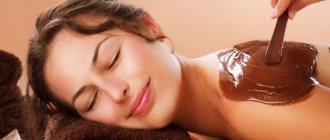Who should really whiten their teeth?
The main reason for teeth whitening is darkening or yellowing of tooth enamel, when plaque penetrates into the teeth so deeply that ordinary hygiene procedures do not help get rid of it.
Causes of darkening of enamel:
- Smoking.
Nicotine settles on tooth enamel and penetrates deep into it. Teeth take on an extremely unaesthetic “smoky” appearance. Toothpastes with a whitening effect are too mild to cope with the plaque of tobacco tars and nicotine. Home whitening will restore the natural whiteness of your teeth, but they may darken again due to a negative habit;
- Excessive consumption of sweets.
The interaction of microorganisms living in the mouth with carbohydrates leads to biochemical reactions with the release of various substances. They act aggressively on teeth. The enamel becomes so thin that yellow dentin shows through;
- Drinking coffee and strong tea.
Drinks with dyes negatively affect the color of tooth enamel, which can no longer be called snow-white. The color of enamel is affected by red wine, strong tea, natural and instant coffee. Brown plaque on teeth quickly appears with regular consumption of these drinks;
- Use of the antibiotic tetracycline.
If the expectant mother took tetracycline while expecting her baby, the baby's tooth buds will turn yellow. The same effect occurs if children take tetracycline during tooth formation in early childhood (“tetracycline teeth”);
- Excessive intake of fluorine compounds.
Environmental problems associated with poor-quality water or air, food, can cause the development of fluorosis due to an excess of fluoride in the body. This disease is characterized by pockmarked enamel (“speckled teeth”);
- Underdevelopment of dental tissues.
Hypoplasia appears on the teeth in the form of white or yellow spots. They are symmetrical and the same size. If signs of hypoplasia are noticeable when communicating with a person, the affected areas of the teeth are filled or whitened.
What do you need to know when trying to whiten your teeth at home?
Teeth whitening is similar to hair bleaching and affects a person's health. Minimizing the harm caused to the body is the main goal of bleaching.
Before teeth whitening, it is advisable to consult a dentist to assess the quality of tooth enamel. It must be strong enough and have the required thickness. The yellowness that forms on the teeth should not penetrate far into the enamel, in which case the home procedure will not bring results.
Before performing a home cosmetic procedure, dental health is assessed for pathologies: periodontitis, periodontitis, alveolar processes, cement fillings, abnormal eruption of wisdom teeth.
Assessing the condition of the fillings is not an unnecessary precaution. If gaps appear between the filling and the tooth tissue, an aggressive substance will penetrate through them and cause destruction of the tooth from the inside.
After treating the enamel and obtaining the desired effect, it is not advisable to smoke or consume products with coloring pigments. Hygienic brushing of teeth should be carried out with a soft toothbrush, as stiffer bristles can cause discomfort. Whitening toothpaste will help maintain the achieved effect.
The procedure for whitening tooth enamel is repeated after 2-4 months.
The most affordable and effective folk remedies
Home whitening with hydrogen peroxide. Peroxide is considered the easiest way to whiten teeth. You can use both peroxide itself and a special whitening gel based on it. As a rule, the results of whitening are visible after just a few weeks of the procedure. You can bleach with peroxide in the following ways :
- After brushing your teeth, add 20 drops of hydrogen peroxide to 1/4 glass of water and rinse your mouth with the prepared solution.
- Apply peroxide to a cotton swab and rub it on your teeth, then brush your teeth with a clean toothbrush.
Important! Do not swallow hydrogen peroxide! After each of the described procedures, rinse your mouth with clean water.
Soda. The next popular folk remedy for self-whitening teeth is ordinary baking soda. Dip your toothbrush in baking soda and brush your teeth. The enamel of the teeth will immediately become lighter, but discomfort in the gums may appear.
Attention! Baking soda practically removes the top layer of enamel from your teeth. If you use it more than once a month, the enamel will quickly become thinner, resulting in tooth sensitivity to heat, cold, spicy and hot foods.
Lemon and soda. Another recipe for homemade teeth whitening based on baking soda that many people know includes lemon juice. You need to mix 1/2 teaspoon of baking soda and the same amount of lemon juice, and then add a few drops of hydrogen peroxide to the resulting mixture. The prepared mixture is used to wipe the teeth. Another recipe will help people with sensitive mucous membranes: add a drop of lemon essential oil to a brush with toothpaste.
Rinsing the mouth with lemon juice or rubbing the enamel with the pulp of a lemon peel has a good effect.
Honey. Our grandmothers used honey to whiten tooth enamel, or rather toothpaste consisting of: 1/2 teaspoon of salt, 1 teaspoon of honey, crushed calcium gluconate tablets and water. Brush your teeth with the prepared paste for at least 3 minutes; apply it with gentle movements.
Iodine. A folk remedy using iodine is quite effective, but takes a long time. Squeeze the toothpaste onto the brush and add 1 drop of iodine on top of the paste. Brush your teeth as usual. This method can be used no more than 2 times a month.
Who should not whiten their teeth and when?
Before you begin whitening your teeth at home or at the dentist, you need to determine the reason for the change in their shade. Darkening or yellowing of teeth can be external or internal, and only external staining can be corrected using traditional methods. Internal causes of tooth discoloration can be very diverse, ranging from enamel hypoplasia, through which darker dentin tissues are visible, to chronic accumulation of brass, tin, iron and other substances.
In addition, there are a number of contraindications for teeth whitening:
- Pregnant women and people with systemic diseases should not undergo whitening in dental offices. As an alternative, you can use some of the tooth-friendly home whitening products, such as activated charcoal;
- Periodontal diseases are a contraindication to whitening, since the lightening components can aggravate the condition of the tissues, provoke bleeding gums and a number of other pathologies;
- For patients with large carious cavities and untreated diseases of the teeth and gums, whitening is contraindicated;
- People who have a lot of fillings in visible areas are not recommended to whiten their teeth, since the aesthetic value of the result in this case is minimal - the fillings either cannot be whitened or lighten too much. After the whitening procedure, you will have to replace them, which can be difficult if there are a lot of fillings;
- Teeth whitening is contraindicated for children under 16 years of age, since their hard tooth tissues are not fully formed, and the bleaching substance can penetrate through them to the nerves and damage them;
- People who wear braces or have recently had them removed should not whiten their teeth. Braces themselves damage tooth enamel, especially the areas of the teeth to which the clasps are attached. After their removal, the teeth do not lose sensitivity for several weeks; it is necessary to maintain this period until complete recovery.
Causes of darkening of dental crowns and contraindications to whitening
The easiest way to have your teeth whitened is to see a specialist. The doctor will select a gentle composition and tell you how to care for your smile in the future. Do-it-yourself teeth whitening is based on traditional medicine methods. Methods for home teeth whitening differ in several ways:
- Safety of operations performed.
- Application technique.
- Expensive.
- The effect.
Since aesthetic lightening of enamel in a dental clinic is more expensive than using traditional medicine, more and more people are gravitating toward teeth whitening at home. But before using any methods, it is imperative to visit a dentist-therapist to get acquainted with personal recommendations for whitening and subsequent care for a snow-white smile.
Factors contributing to yellowing of enamel
Before you quickly whiten your teeth at home, you need to understand the cause of plaque formation, this will help prevent further darkening of the enamel.
Dental plaque is soft deposits formed from various microorganisms and their metabolic products. Plaque not only causes a putrid odor from the mouth, but also provokes darkening of the crowns.
Healthy teeth shades range from grayish to yellowish.
The color of tooth enamel is influenced by both hereditary factors and various external reasons:
- Human nutrition. Excessive consumption of coloring foods and drinks.
- Violation of the integrity of tooth enamel, carious cavities, pigmentation due to dental trauma.
- Smoking.
- The darkening of enamel is also influenced by age-related changes; the older the tooth, the darker it is.
- If the patient has endemic fluorosis or the person drinks water that is not purified from heavy metals.
- Taking medications. The enamel turns yellow with prolonged use of antibiotics.
- Lack of proper oral hygiene.
How to whiten teeth enamel with activated carbon?
Activated carbon is a safe means of teeth whitening at home, minimizing mechanical damage to the enamel. In addition, if accidentally swallowed, activated carbon does not cause harm to the body, which cannot be said about other bleaching agents.
The whitening properties of activated carbon components have been known for a long time - one of the “grandmother’s” recipes for a snow-white smile includes brushing your teeth with wood ash. Wood ash was used as tooth powder or simply chewed, trying to do it so that all surfaces of the tooth were affected. This technique has a scientific basis - wood ash contains potassium hydroxide, a powerful abrasive substance that removes plaque from the chewing surface and prevents the formation of stains on the teeth.
Activated carbon can be made from wood ash, fruit seeds, and coconut shells. Activated carbon tablets can be crushed into powder, the fine particles of which will not injure your teeth. You need to brush your teeth with activated carbon in the same way as with tooth powder, but do not press too hard on the brush so as not to scratch the enamel.
A quick way to whiten teeth without preparing powder is to chew two or three tablets at once, then rinse your mouth with warm water several times. Despite all the beneficial whitening properties of charcoal, immediately after the procedure, the smile may “blacken” due to powder particles stuck in the interdental spaces. They are washed thoroughly, after which you can brush your teeth with regular toothpaste.
The positive effect of this procedure lies not only in the abrasive effect of activated carbon, which removes soft plaque, but also in its absorbent effect. Charcoal absorbs toxins, acid-forming substances that can damage tooth enamel and cause stains on its surface. However, you should not use charcoal powder to clean your teeth too often to avoid damage to the enamel and tooth hypersensitivity.
Safe brushing of teeth with baking soda
In this case, a soda solution is used. It is prepared from 1 tsp. soda powder and 250 ml of warm water. You need to moisten your toothbrush in it and brush your teeth. Compared to other methods, this method is more gentle. To achieve a whitening effect with it, you need a longer time.
Whitening Recommendations
A lasting result without harm to the teeth is achieved by following several rules:
- The frequency of use of the above methods should not exceed 1 time every 7-10 days. Daily use of soda is prohibited.
- In the intervals between procedures, you need to brush your teeth with toothpastes high in minerals; products with fluoride are excellent.
- If after several procedures your teeth become too sensitive, then you should stop whitening them and switch to pastes that strengthen the enamel.
- Whitening with soda should be done using a cotton swab, disc or gauze piece. A toothbrush can aggravate the effects of abrasive components.
Teeth whitening with lemon
Therapeutic procedures for teeth using lemon are chemical methods of enamel whitening. They are less traumatic than abrasive bleaching with soda or activated carbon, since the degree of impact can be controlled by simply reducing or increasing the concentration of lemon juice in the solution. Whereas when brushing your teeth with soda, there is a risk of scratching the enamel even with minimal pressure from the toothbrush.
There are several simple and effective recipes using lemon:
- Thoroughly wipe the front surface of the teeth with the peel of a fresh lemon for 3-5 minutes. Make sure that there are no particles of peel or any other food left in the spaces between the teeth. It is a proven fact that the greatest risk for the development of caries, damage and darkening of tooth enamel is not one-time exposure to acid-forming or coloring substances, but the constant presence of food debris. This creates a breeding ground for pathogenic microorganisms that cause most pathologies of the teeth and oral cavity in general;
- A gentle treatment method that is suitable even for people with sensitive teeth. Before brushing your teeth, add 1-2 drops of lemon juice to the toothpaste and carry out the hygiene procedure as usual. Practice no more than twice a week for one month;
- Lemon pulp is used to lighten teeth whose enamel is insensitive to acids. Apply a fresh slice of lemon to your teeth for a couple of minutes until discomfort occurs, then remove and rinse your mouth with warm water;
- A solution of lemon juice in a glass of water can be used to rinse the mouth, using a course of no more than a month. The ratio of the solution components is 1:1, you can reduce the content of lemon juice in case of painful teeth reaction.
Opalescense – teeth whitening with trays
Home teeth whitening with trays from Opalescense is one of the most popular home whitening methods in Europe and the USA. Opalescense whitening kits are produced by a well-known manufacturer of dental materials - the company ULTRADENT (USA), which also produces products for professional whitening at the dentist (i.e. you will get a really high-quality product).
There are 2 options for whitening with the Opalescense system -
- Opalescence PF (from 4500 rubles) –
contains bleaching gel based on carbamide peroxide at a concentration of 10%, 15% or 20%.
You can buy Opalescence PF (Fig. 6) in any of these concentrations. In addition to the active substance, the teeth whitening gel also contains potassium nitrate and sodium fluoride, which are necessary to reduce tooth sensitivity, which often develops due to whitening. Whitening with Opalescence PF is no less effective than professional whitening techniques. However, this particular Opalescence option will require more effort from you. The fact is that Opalescence PF teeth whitening gel is intended for use only in individual trays (Fig. 7-9), for the manufacture of which you will still have to go to the dentist once. Dental trays are reusable, and in the future you can use them for repeated whitening courses.How it is carried out - individual trays with whitening gel added to them are placed on the teeth for the whole night (this is the most convenient option). You can also do this during the daytime. The duration of whitening can be from 1-2 hours to 8-10 hours daily, which will depend on the concentration of carbamide peroxide used, how pronounced the effect you want to achieve, as well as on the degree of tooth sensitivity. The whitening process is as follows:
Kit Contents - The kit includes 8 syringes of 10, 15 or 20% carbamide peroxide whitening gel, 1 tray storage container, Opalescence toothpaste, travel bag case, and a tooth shade guide so you can keep track of change in tooth color.
By the way, a similar whitening product to Opalescence PF are kits under the “Perfect Bleach” brand from the German company VOCO (with 10 or 16% concentrations of carbamide peroxide). VOCO is also a renowned manufacturer of dental materials. Perfect Bleach (as well as Opalescence PF) requires custom-made dental trays.
Application of Opalescence PF: video
- Opalescence TresWhite Supreme (about 6,000 rubles) – this version of the Opalescence kits is whitening for the “lazy”. This set already contains universal gel-filled mouthguards (Fig. 10), which only need to be applied to the upper and lower dentition. Opalescence TresWhite Supreme uses a whitening gel based on 10% hydrogen peroxide, rather than carbamide peroxide like Opalescence PF.
The mouthguards in the TresWhite Supreme sets are made of two layers (Fig. 11). The outer green layer is protective - it is removed after the mouth guard is inserted into the oral cavity. A viscous whitening gel is applied to the inner transparent layer, and therefore, after inserting the tray into the mouth, it remains on the teeth. Next, you will only need to adapt, i.e. press it tightly to your teeth (Fig. 12-15). Mouthguards for the upper and lower jaws have different sizes due to the different shapes of the dentition.
How is it carried out? Because hydrogen peroxide is more aggressive than carbamide peroxide, the entire whitening process will take no more than 30 to 60 minutes a day (you can adjust the duration of the procedure yourself, but within these time intervals). After just 5 days you will notice visible results. The advantage of this option is that there is no cost for making individual aligners, but whitening in hard-to-reach areas, for example, in the interdental spaces, will be worse.
Applying a two-layer mouthguard to teeth -
Set contents – the Opalescence TresWhite Supreme set contains 10 aligners for the upper jaw and 10 aligners for the lower jaw. You can choose your own version of the set with different flavors - mint, peach or melon. The cost will be about 6,000 rubles. When purchasing from Russian suppliers, you will receive detailed instructions in Russian.
Application of Opalescence “TresWhite Supreme”: video
Which is better: Opalescence "PF" or "TresWhite Supreme"?
Although carbamide peroxide and hydrogen peroxide have similar effects, you may have noticed that products containing them have very different concentrations. The fact is that a 10% carbamide peroxide whitening gel will correspond in strength to a 3.5% hydrogen peroxide-based gel. And 15% urea peroxide gel = 5.5% hydrogen peroxide (respectively, 20% urea peroxide = 7.5% hydrogen peroxide), i.e. the difference is about 3 times.
Whitening gel based on carbamide peroxide has a milder effect and causes fewer side effects - such as increased sensitivity of teeth, irritation of the mucous membrane of the gums and throat. Despite the fact that whitening gel with carbamide peroxide requires more exposure time on the teeth, it is no less effective than products based on hydrogen peroxide. In addition, only products with carbamide peroxide can be used for so-called “overnight whitening”, when trays with gel remain fixed on the teeth all night while you sleep (and this is the most effective type of whitening)
The whitening gel based on hydrogen peroxide used in Opalescence “TresWhite Supreme” has a faster aggressive effect, and therefore 1 procedure should last no more than 60 minutes. It makes sense to choose this option: 1) if you need a very quick visible effect, 2) you do not suffer from increased tooth sensitivity. In addition, this version of the Opalescence kit is suitable for lazier people who do not want to spend time making individual dental aligners at the dentist (24stoma.ru).
Homemade enamel lightening with soda
Baking soda can be used for at-home teeth whitening as an abrasive that helps remove soft plaque from the enamel surface. To do this, dilute soda with water to a homogeneous paste, apply it to a brush and brush your teeth. Or leave the medicinal composition on the teeth for a few minutes, then rinse with warm water.
A combination of peroxide and soda, which are mixed until smooth and used instead of toothpaste, brightens the tone of teeth well. Baking soda-based recipes should not be used to clean and whiten teeth more than once every two weeks to prevent thinning of the enamel. At the same time, it is recommended to use fluoride-containing toothpastes to restore the mineral composition of tooth enamel.
When using baking soda to whiten teeth, you need to take precautions. First, make sure that baking soda does not get on your gums, as rubbing it can damage the tissues and cause them to bleed. Secondly, it should be remembered that when the enamel is thinned, this procedure can be dangerous for the teeth, provoke their increased sensitivity and even contribute to the occurrence of caries.
Activated carbon
Charcoal and coconut charcoal, which are the basis of the product, cope well even with persistent darkening, while it slightly polishes the surface and the effect is similar to professional cleaning. Its microparticles, like an abrasive, dissolve all the excess that has covered the enamel.
Coal is ground into powder and brushed after the morning procedure using toothpaste.
Lightening occurs by at least 2 tones. The results last for several weeks. The procedure will cost 20-30 rubles.
How to whiten teeth with hydrogen peroxide?
Hydrogen peroxide is a popular means for teeth whitening, and it is used not only at home, but is also part of whitening gels that are used by dentists to professionally lighten enamel by several tones. Naturally, the concentration in all these products is different. For radical lightening, dentists use 30% hydrogen peroxide. Moreover, after each such procedure, the dentist must remineralize the teeth with a medicinal composition in order to prevent the leaching of hydroxyapatites from the enamel. At home, a 3% peroxide solution is sufficient.
There are many recipes for use. The simplest of them is to apply a moistened cotton swab to the stained surface and leave it for several minutes, after which the mouth should be rinsed with warm water. The rules for using peroxide at home are the same as for professional whitening - avoid contact with gums and other soft tissues and ingestion of the solution. In high concentrations, this drug can be dangerous to the body.
Long-term use of hydrogen peroxide can also increase tooth sensitivity to the point of causing a painful reaction not only to heat and cold, but also to sweet and sour foods. It is not recommended to use it more than once a week; after a month's course of treatment, you need to take a break for two to three months.
How to remove plaque from teeth?
The enamel becomes damaged over time and microscopic cracks and chips form on the hard surface. It is here that favorable conditions are created for the accumulation of food debris and the proliferation of bacterial flora. Even thorough cleaning and medicinal paste are not always able to cope with the elimination of the pathological process.
Over time, the formation hardens - tartar forms, which cannot be removed at home without the help of a qualified dentist.
To effectively solve the question “How to remove plaque from teeth?”, you should accurately determine the localization of the pathological process:
- The dentogingival pathological process develops on the crown near the gums.
- The proximal option is the accumulation of deposits at the contact points of the side walls.
- Subgingival - visually it is extremely difficult to determine. The pathological process occurs under the gums, leading to the development of complications in a short time.
How to remove black plaque on teeth?
Black spots are formed due to the abuse of coffee, black tea, alcoholic beverages and narcotic substances. It is formed over many years (sometimes throughout life). If diagnosed in childhood, it is often of a fungal nature (the cause is dysbacteriosis). Often occurs after severe viral infections.
How to remove black plaque on teeth:
- Laser removal is the most effective and gentle method that allows you to get rid of the defect for a long time. The procedure is absolutely painless, does not damage the enamel, and avoids bleeding.
- Ultrasonic cleaning is the method of choice for weakened enamel. It acts very gently and removes even hard deposits (including tartar).
- Home remedies – regular use of medicated pastes with high fluoride content.
- An excellent prevention is regular consumption of fresh fruits and vegetables (carrots and apples are especially useful). These products provide significant oral health benefits by preventing staining and improving gum circulation.
How to remove yellow plaque on teeth?
Yellow deposits on the surface of the enamel are the most benign; they can be easily removed and rarely transform into stone; they have a loose structure. Regular brushing with a stiff brush and whitening pastes will help effectively remove deposits and give your smile a sparkling whiteness.
The main condition is to purchase only professional paste in pharmacies or specialized departments of stores. You cannot use medicinal pastes all the time - a monthly course, once every six months, is enough.
How to remove yellow plaque on teeth using home remedies? You can use regular baking soda - thoroughly clean your mouth with the product for 2-3 minutes before your usual brushing. To avoid damaging the enamel, this method should be used once a week.
How to whiten teeth using peroxide and baking soda at home?
Any peroxide-based products should not be used without first testing for an allergic reaction. To do this, apply a little hydrogen peroxide to the crook of your elbow or the delicate skin of your wrist and wait a few hours. Additionally, you can conduct a test on the teeth and oral cavity using a highly diluted peroxide solution.
Only after this can you start whitening using these recipes. At the slightest feeling of burning or pain, the composition should be washed off and rinse your mouth several times with warm water. Peroxide should not be used for mouth ulcers, which often occur in heavy smokers, tongue injury during piercing, and other injuries and wounds of the oral cavity. Untreated caries and periodontal tissue diseases are also contraindications to the use of home whitening products.
The following method works most effectively: hydrogen peroxide in a 3% concentration is mixed with baking soda in equal proportions and the resulting slurry is spread with a cotton swab over the surface of the tooth enamel in places that need to be whitened. Leave the mixture for no longer than a minute, then rinse and rinse your mouth. If the composition begins to foam on the teeth, then do not worry - this is a normal part of the procedure. Swallowing the solution even in minimal quantities is prohibited. You can eat and drink no earlier than 30 minutes after the procedure.
Immediately after whitening, you should brush your teeth with fluoride toothpaste to prevent mineral loss.
Read more: Restoring tooth enamel - 5 modern methods
Teeth whitening: types and methods
Mechanical method
The simplest and long-used method in dentistry is to lighten tooth enamel. It is a mechanical cleaning that uses special attachments. The advantages of this method are the effective removal of plaque and fossilized deposits on teeth, the prevention of caries and gum inflammation. After the procedure, the dentist treats the teeth with an enamel protecting agent.
Photobleaching
This method makes it possible to change the color by about 8 to 10 tones maximum. In the process, the dentist applies an appropriate whitening gel containing hydrogen peroxide and activates it with appropriate radiation. Halogen, ultraviolet and LED radiation can be used (irradiation with an LED lamp). One procedure lasts from 15 to 30 minutes. After photobleaching, a fluoride-containing agent is applied to the teeth to reduce sensitivity and protect the enamel.
Chemical bleaching
This is one of the gentle methods, so your teeth can become lighter by only 5 to 7 shades. If you don't know which teeth whitening method to choose, you can start with this. The whitening gel is evenly distributed over the enamel. If you have this done by a professional, he will use a composition with a high concentration of bleach. Your gums will first be protected with a latex plate to ensure that the soft tissue is not harmed during the process. In this case, neither laser nor ultraviolet light is used. Chemical bonding is contraindicated if the patient has polymer fillings, crowns, or veneers.
In-canal whitening
It is also called endobleaching. This method may be offered if the tooth has become very black after treatment and root canal filling. The doctor prepares the tooth, places a special compound there and then fills it. When the result is achieved, the tooth is restored. This type of whitening can only be done once.
Laser whitening
If you want to whiten your teeth, only your doctor can determine which method is best. He will recommend exactly what best suits your situation. We can say that now laser whitening is the safest method of teeth whitening, which is popular. Its effect is long-lasting. Therefore, despite the higher cost compared to other methods, this method is very profitable.
Toothpaste for home teeth whitening
Whitening toothpastes are most often made based on hydrogen peroxide, organic acids and components that soften their negative effect on enamel. There is another group of products whose effectiveness is based on the abrasive effect of dicalcium phosphate and silicon oxide.
In the first case, the enamel is lightened due to chemical acids and oxygen radicals, which discolor the pigments. As a result, plaque dissolves, and the substances that gave the enamel a yellow-brown tint become colorless, and the smile acquires the desired whiteness.
Abrasive toothpastes promote mechanical plaque removal, which in most cases also leads to the expected results. However, when using products from this group, there is a high probability of developing hyperesthesia - dental hypersensitivity.
The safest option is considered to be pastes based on the enzyme papain, which gently removes plaque and prevents the formation of new deposits without thinning the enamel. But such pastes do not provide instant lightening, like products with more aggressive chemical components in their composition.
Popular whitening toothpastes
There are many similar products available in different price segments, so we will consider only a few popular pastes.
- WhiteWash NANO. The option is not cheap, but it is effective. The composition of the complex not only whitens tooth enamel, but also promotes its speedy restoration. The xylitol contained in the composition has a disinfecting effect. The first noticeable effect is achieved after 7 days of use. Price: from 500-600 rubles.
- Lacalut White. A more affordable option, found in most non-specialized stores. Contains fluorides, which compensate for the lack of minerals in the hard tissues of the tooth, however, because of this, the use of the paste by people with a high fluoride content in the body should be limited. Price: about 200 rubles.
- Blend-a-med 3D White Luxe. Another representative of the affordable segment. According to the manufacturer, up to 90% of all stains on the enamel can be eliminated in just 5 days of use. The paste is rich in minerals and helps compensate for the lack of minerals in the enamel. Price: from 150 rubles.
- SwissDent Gentle. Swiss paste, characterized by a very gentle approach to whitening. The abrasive particles included in its composition are very small, so even sensitive enamel will not be damaged. An excellent option for daily use (unless you have a high fluoride content in your body). Price: from 800 rubles.
Whitening and strengthening teeth with rinses
Whitening mouth rinses are mild products that do not damage tooth enamel, but help restore its mineral composition.
They may contain aggressive chemical components - for example, active oxygen, which removes plaque, brightens teeth and prevents the formation of tartar. For patients with sensitive teeth and thinned tooth enamel, there are rinses based on plant extracts of cinnamon, tea tree, cloves, and mint. They not only prevent darkening of the surface of the teeth, but also have antibacterial properties, prevent caries and gum disease.
You need to keep the rinse in your mouth for one to three minutes; the volume for a single use is two tablespoons. Recommended for daily use for a month.
Express whitening methods
There are not many methods of teeth whitening at home approved by supporters of conservative medicine. All of them are effective and aggressive to varying degrees.
Baking soda
Baking soda is a powerful cleaning agent that can even remove deposits on kitchen utensils. And for tooth enamel and adjacent gum tissues, this is “heavy artillery.” Therefore, it is permissible to clean enamel at home with soda only in rare and most extreme cases: when the result is needed immediately, and there are no milder cleaners in the house.
To make an effective whitening agent, you need to add a small amount of baking soda to toothpaste or dilute it with plain water to a paste. It is not recommended to brush your teeth with this mixture using a brush, since such an effect is doubly harmful to the enamel.
You can apply soda slurry to your teeth with a cotton pad or gauze swab and leave it for a few minutes, then also gently and carefully remove it with cotton wool using strictly vertical movements and rinse your mouth well with warm water. It is advisable not to consume acidic foods within an hour after this procedure.
Activated carbon
Black charcoal powder can also provide fast teeth whitening. The property of attracting and absorbing various components has made activated carbon not only an indispensable gastrointestinal sorbent, but also an effective dental whitener.
The product is gentler than soda, but this does not mean that it can be used often and thoughtlessly. Whitening with activated carbon is unsafe, because when brushing your teeth with an abrasive substance, microscopic cracks and abrasions can form on the enamel , which tend to grow quickly. In addition, the brightening effect of charcoal bleaching, although clearly visible, lasts only 7-10 days, so this method is advisable to use only when urgently needed.
Home cleaning of enamel with charcoal can also be done without using a brush. The carbon tablet must be thoroughly crushed into powder without large grains that could scratch the surface to be cleaned. Then you should dilute the powder with water to obtain a mixture of paste-like consistency, carefully apply it to your teeth, hold for several minutes and rinse thoroughly.
To enhance the effect, crushed coal can be mixed with a small amount of baking soda.
Hydrogen peroxide
If the previous two abrasives act on dirt mechanically, then peroxide provides chemical cleaning of the enamel. The method of quickly whitening teeth using hydrogen peroxide is as close as possible to a professional one , since the cleaning compositions used in clinics contain the same component. As a result of the chemical reaction, not only the surface enamel is lightened, but also the deeper dental tissues.
To prepare the cleaning composition, a pharmacy 3% solution of hydrogen peroxide is mixed with soda instead of water. The result is a dual-action abrasive: on the one hand, it is extremely effective, but on the other, it is too aggressive for the teeth and everything that surrounds them. Like a mixture of soda and water, this product is applied to the teeth with a soft swab and also carefully removed.
A more gentle option for lightening the tooth surface with peroxide is rinsing the teeth, but for such a procedure it is permissible to use only a 1.5% solution, which will not cause a burn to the gum mucosa.
The big disadvantage of the method is that the chemical reactions caused by the drug occur not only on the surface of the tooth, but also inside the enamel and dentin. Due to frequent bleaching with hydrogen peroxide, dental tissues acquire a porous structure, dull appearance and become more vulnerable to external influences, including staining.
Essential oils
You should not expect quick results when using essential oils, but over the course of several months, their regular use can make your teeth noticeably brighter. Essential oils, unlike previous lightening agents, are good for gums, as they have bactericidal and strengthening properties, relieve inflammation and freshen breath.
Tea tree, grapefruit, lemon and orange oils are effective for lightening enamel. Tea tree essential oil should be dropped directly onto a toothbrush, thoroughly brush each tooth with it, leave for 15 minutes and rinse your mouth with regular warm water. Citrus oils are added to the water for rinsing (2-3 drops per glass), and the mouth is rinsed daily before bed.
Fruit acids
Teeth whitening with fruits does not happen quickly, but it is as safe as possible. But only if you follow moderation, since with prolonged and frequent exposure, food acids corrode fragile enamel.
What fruits help whiten enamel coating:
- Lemon. You need to rub the darkened teeth with the inner white pulp of the lemon peel, and then rinse your mouth with water. In addition to the peel, you can use lemon juice - both in pure form and as an additive for diluting soda.
- Strawberry. Apply the crushed strawberry pulp directly to the brush and brush your teeth with your usual movements, after which the mixture is washed off with water. After the procedure, it is imperative to brush your teeth well with regular toothpaste, preferably one containing fluoride.
- Banana. You should wipe your teeth with the inside of the peel of the tropical fruit for three minutes, and then rinse your mouth with warm water. The procedure can be used up to two times a week.
- Orange and laurel. First, the teeth are treated with the white pulp of orange peel, and then pre-prepared powder from bay leaves is applied to the enamel. Leave it on for five minutes and wash off.
Toothpastes
A good whitening paste will not quickly whiten your teeth, but it can be used to prevent yellowing and darkening of teeth that have already been cleaned of plaque. You can use such products no more than twice a week.
Effective lightening pastes:
- Lacalut White.
- President White Plus.
- Rembrandt "Antitobacco and coffee."
- Lacalut White & Repair.
Using whitening gels at home
Homemade whitening gels are used together with special trays to increase the area of contact of the active ingredients with the enamel and increase the degree of whitening. Aligners are made of flexible plastic or silicone and are placed on the upper or lower jaw, depending on which teeth need whitening.
The gel is supplied with the mouth guard, or it can be applied to the mouth guard yourself. Products from different manufacturers vary in composition. Gels for intensive lightening of tooth enamel contain hydrogen peroxide; mouth guards with this composition can be worn for no longer than half an hour; the procedure is repeated twice a day for a two-week course of treatment.
Gentle gels contain urea or carbamide peroxide in a small concentration; they can be worn without removing them for several hours. Therefore, for night whitening at home, it is better to use these gels. Moreover, wearing a mouthguard at work or in public places can cause inconvenience.
Ready-made mouthguards can be purchased at a pharmacy. However, they may not be effective enough, since the structure of the jaw and the sensitivity of the teeth are different for all people. To enhance the whitening effect, you can contact your dentist, who will make a custom mouthguard and help you choose the optimal concentration of active ingredients in the lightening gel.
Contraindications
Almost all procedures aimed at cosmetic changes in the body have certain contraindications. You should not strive for ideal whiteness of tooth enamel in the following cases:
- increased sensitivity of teeth;
- a large number of fillings, as well as if there are fillings in prominent places (they will not be bleached and therefore will become noticeable);
- during pregnancy and breastfeeding;
- presence of caries;
- allergic reactions to hydrogen peroxide;
- taking certain medications;
- under 16 years of age.
Teeth Whitening Strips
This modern product will allow you to achieve a visible cosmetic effect in a short time. Special strips with a brightening composition applied to them can be purchased at a pharmacy chain or in an online store. Consumers with sensitive teeth can purchase a gentler teeth whitening option.
Using the strips is very simple - you need to apply them to your teeth every day and leave them there for at least half an hour. After a month, the enamel will lighten by about 2-3 tones. The effect of a snow-white smile will last a couple of months, then the tooth enamel will darken again. A side effect of the procedure is a temporary increase in tooth sensitivity.
Whitening strips are high-end products; they are in a different price category and are more convenient to use compared to gels and trays. The strips adhere firmly to the teeth, allowing you to talk during the procedure.
The disadvantage of any whitening strips is that the interdental spaces cannot be lightened in this way.
Causes of darkening and yellowing of enamel
- Individual characteristics and age
By nature, enamel can be yellowish, grayish or white. These are innate characteristics that are in no way related to external factors. It is possible to change the color of such enamel, but the possibilities are limited.
The same goes for age. Over the years, the color of teeth usually becomes darker. This is a natural process.
- Water composition
To a certain extent, fluoride contained in tap water is beneficial for teeth. But if its level is elevated, then the risk of fluorosis – dull white or yellowish spots on the surface of the enamel – increases. Fluorosis usually affects the visible surfaces of the teeth - the upper front incisors, and is very difficult to treat.
Fluorosis: dull white spots spoil the appearance of the enamel
- Dental care
Insufficiently thorough hygiene is the reason that plaque remains on the teeth and gradually hardens. In hard-to-reach places - between the teeth, near the roots - it mineralizes and turns into stone. Typically, such deposits acquire a yellowish, brown color, and can be almost black.
Tartar is hardened plaque
- Nutrition and habits
Black tea, coffee, and red wine leave dark pigments on the teeth. Smokers' teeth darken due to the fact that the tars contained in tobacco smoke settle on them. With frequent use, ordinary cleaning and even professional hygiene do not restore the natural whiteness of teeth, because the enamel itself darkens due to pigments.
- Other external factors
There are a number of medications that can affect the color of enamel. Moreover, the side effect can appear decades after treatment. Defects such as darkening due to medication are almost impossible to whiten, since the pigmentation in this case is located in the deep layers of the enamel.
Tetracycline teeth - darkening due to antibiotics
Whitening Pencil
| This portable type of whitening gel is applied with a special applicator. After the time specified in the instructions, the composition is removed from the enamel. Consumers are offered pencil models, the active substance of which is removed by saliva, without requiring special manipulations. The concentration of the bleaching agent is insignificant compared to the gel that comes with the trays. Therefore, the pencil is used to maintain the whiteness of teeth in “camping” conditions, to remove stains from tea, coffee, and tobacco plaque. |
Teeth whitening with tea tree oil
| High-quality whitening can be carried out only with natural essential oil of 100% concentration. First, carry out regular teeth cleaning using a toothbrush and toothpaste. Then apply 2-3 drops of essential oil to the brush and distribute it over the surface of the tooth enamel. Numbness of the cheek or part of the tongue is a side effect of the procedure, after which the oral cavity is thoroughly rinsed. Cleaning enamel with tea tree oil will remove not only plaque, but also tartar. |
The procedure goes like this:
- The surface of the teeth is cleaned of plaque and stone so that the color is uniform.
- A retractor is installed in the patient's mouth, which helps isolate the lips, cheeks and mucous tissues from the bleaching agent.
- A liquid rubber dam (a polymer that hardens under the influence of a special lamp) is applied to the edge of the gum. The patient is wearing glasses to protect their eyes.
- The dentist applies a special gel to the enamel.
- Under the active action of the laser, the composition is activated. Oxygen molecules penetrate into the deep layers of tooth enamel, they remove pigmentation that accumulates there. It will take approximately 1-2 minutes to process each tooth.
- At the end of the procedure, the doctor will treat the teeth with a composition containing calcium and fluoride. This will help strengthen the enamel.
You can research all types of teeth whitening in dentistry in advance, but most likely, this is the one you will like the most, because it is suitable even for sensitive teeth. It will take you approximately 1.5 hours to get a beautiful sparkling smile. During the process you will feel comfortable as everything is painless. This method was chosen by the specialists of Amel Dental Clinic as a priority. Before the procedure, we make sure to remove plaque and tartar. This is necessary in order to get maximum effect.
With proper care, the results can be maintained for up to two years. It is necessary to take into account the fact that each case is individual, so how white the teeth will be depends on our initial data. Color is also influenced by our taste habits. If you are used to eating a lot of coloring foods, then it is quite possible that you will have to resort to the whitening procedure more often. It is worth remembering that coffee, fruit and berry juices, tea, fruits, balsamic vinegar, tomato juice, soy sauce, red wine, carrots, and beets can cause darkening and coloring.
Previously, many believed that this method was harmful, but this data has long been no longer relevant. Thanks to modern technology, it is simple, fast and as safe as possible.
Prevention of yellowing of tooth enamel
To prevent yellowing of tooth enamel, you must adhere to good oral hygiene and avoid eating foods with coloring compounds.
In addition to brightly colored sugary sodas, candies and chocolates, foods that cause enamel damage include:
- Freshly squeezed and canned fruit juices - pomegranate, orange and others. In addition to the coloring compounds (phenols), which are contained in red berries and fruits, they have acid-forming properties, which enhances the process of staining the enamel;
- Wine, and not only red wine, but also white wine is potentially dangerous. Red contains phenols and tannin, white promotes acid formation and contains tannins, which give tooth enamel a yellow tint;
- Tea, coffee - with constant use, they provoke yellowing of tooth enamel no less than cigarettes. This is especially true for lovers of strong brewed black tea and coffee lovers who drink 3-4 cups of the drink per day;
- Condiments, sauces and spices - curry, balsamic vinegar, ketchup can cause yellowing of teeth if consumed in large quantities daily;
- Fruits and vegetables of bright colors - blueberries, blackberries, beets, raspberries, cherries. With all the benefits of these products, their coloring properties cannot be denied. This doesn't mean you need to cut them out of your diet completely, just that you need to take some precautions.
Contrary to the general belief that you can neutralize the harm of products that cause enamel staining if you immediately brush your teeth after eating them, this is not so. The fact is that enamel becomes vulnerable under the influence of acids immediately after eating. If you brush your teeth immediately after eating sweets or brightly colored fruits, you can mechanically damage the enamel, which only increases its sensitivity and promotes the formation of stains.
It is better to put clean water in your mouth and hold it there for several minutes. It is also helpful to hold saliva in your mouth before swallowing. Saliva contains natural components that protect the enamel from damage. These properties of saliva are used to promote chewing gum - the chewing process promotes increased salivation. But chewing gum is not the best option for daily use, as it may contain harmful ingredients, aspartame and other sweeteners.
There are also products that promote the formation of a protective film, which makes the enamel temporarily resistant to dyes and acid-forming substances. It is recommended to include such foods (for example, steamed broccoli) in the diet more often, eating them before eating food that is potentially harmful to teeth.
Smoking is one of the common causes of yellowing of teeth; patients at dental clinics regularly whiten their teeth to remove the so-called “smoker’s plaque.” As a result of constant exposure to cigarette smoke, yellow-brown stains appear on the teeth. It is necessary to limit this bad habit or completely abandon it in order to avoid yellowing of the enamel.
Immediately after bleaching, it is recommended to avoid eating foods and drinks that are colored and smoking. This is especially true for laser or acid whitening procedures at the dentist - at this time, tooth enamel becomes especially vulnerable to pigments.
In order to prevent yellowing of teeth after whitening and to maintain its effect for a long time, it is recommended to drink drinks that can cause pigmentation through a straw. This applies to red and other brightly colored fruit juices, soda, cocktails, tea and coffee - they are also drunk through a straw when chilled.
Prevention of darkening of tooth enamel
The first and main preventive measure is proper oral hygiene. You should brush your teeth at least in the morning and evening, but you can even brush them after every meal. Additionally, the spaces between them must be treated with interdental floss or, if there is none, then with a toothpick. If at some point it is not possible to use a brush and paste, you should rinse your mouth - with water, herbal decoction or a special rinse.
It is better to drink berry juices through a straw, and after eating fresh berries, brush your teeth or at least rinse your mouth with water. It is advisable to reduce the consumption of strong tea, coffee and lemonades with artificial colors, and stop smoking.
On the contrary, the amount of hard fruits and vegetables such as apples, carrots, cucumbers in the diet should be increased - they provide effective mechanical cleaning of the surface of the teeth.
How long does whitening result last?
| After a course of teeth whitening at home, the result can last from several months to a year, of course, subject to making some changes to your usual diet. Then the enamel gradually loses its whiteness, becomes yellow or brown, and the course must be repeated. Professional whitening keeps teeth snow-white from six months to three years, if all precautions are taken in the first days after the procedure. But teeth whitening in a dental office using AirFlow abrasive technology or acidic chemical compounds has more contraindications. Another significant drawback of such procedures is that teeth can become hypersensitive for several weeks, which makes eating hot, sour and sweet foods, drinking tea and even breathing in cold weather unbearable due to painful sensations. |
Author of the article: Muravitsky Boris Viktorovich, dentist, especially for the site ayzdorov.ru
Special stripes
Capable of brightening your smile by two shades .
Indicated for use no more than twice a year. The result is evident after the first procedure, although their course involves about 10-14 sessions to consolidate the result and maintain the resulting shade for several months. The technique of application is quite simple - special pads are attached to both jaw rows (they vary in the set). The inner side is impregnated with a special component that etches away the pigment, due to which lightening occurs. Price – about 1,200 rubles per set.










